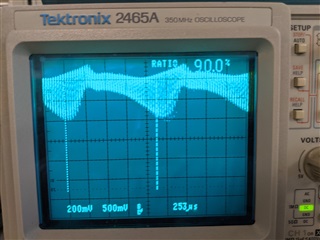We have been having an issue with the system clock on the MSP430F5437AIPNR where in some instances we have a temperature dependent failure. We were using an Epson FC-135 32.768kHz crystal and so there is plenty of safety factor and operational allowance, but we find that sometimes when the temperature gets above 40C to 60C the oscillations become erratic. This appears to be only an issue with units made after the middle of 2020.
Were there any changes to the MSP430F5437AIPNR in late 2019 or early 2020?




